Squid Fishing Tactics by Aaron Edwards
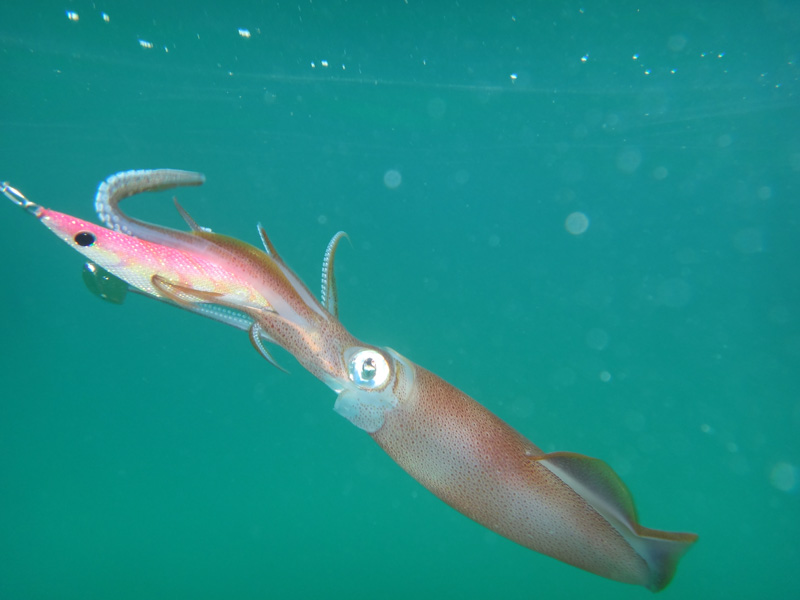
Species Overview
Squid are not fish, they are cephalopods, invertebrate animals which are more closely related to molluscs than anything else.
There are over 500 species of squid found in the world, however there are only 2 prevalent species in Moreton Bay, The Arrow Squid and its larger cousin the Tiger Squid or Northern Calamari.
Arrow squid are smaller in size 10cm-20cm but are more common and easy to catch,
Tiger Squid can grow much larger (over 100cm) but average around 20-30cm and about 400-800grams.
Both species are edible and fun to catch.
Where & When
Squid can be found all year round further out in the bay around the islands (Moreton, Stradbroke, Peel etc)
If you are Squid fishing from the mainland squid can mainly be found from around April to October as that’s when the water clarity improves.
Squid hunt by sight, they do not like dirty water or strong currents.
Squid are an ambush predator and use camouflage to surprise their prey, and as such can be found lurking in areas with a lot of structure (Reef, Rocks, and Weedbeds).
How
Squid fishing can be done by using several methods, using a metal squid spike with a pilchard or whiting as bait is an older method, though in more recent years using a squid jig.
Squid jigs are a lure specifically designed for squid fishing, they are often around 3-6 inches in length, and resemble a prawn or small baitfish, with 2 rows of barbs at the rear of the jig. They come in many designs and colors, using bright colors in poorly lit areas or at night, and natural colors in clear or well lit conditions
Most squid are captured by sight casting, this is where (with the aid of a headlamp) you actively search for the squid and cast near them. By actively flicking the jig in the water it attracts them to the lures. Allow the lure to settle on the seabed for up to 30 seconds and lift and flick the jig again, most times the squid would have moved into an attack position waiting for the jig to move.
You may need to repeat this process several times and in between you may wish to change the jig for an alternate colour or size depending on the conditions and the aggressiveness of the squid.
If using the metal spike with bait you can also add a float to allow the bait to drift into areas where the squid lay in ambush or where they are actively hunting.
Remember that once hooked, maintain a constant pressure on the line and do not be too aggressive with pulling the squid in as you may pull the spikes from the tentacles.
Squid Fishing Hardware – Jigs:
There are various Jigs available to the Australian market and the ones list below are just a small sample of the range at Tackle Land in Sandgate:
- Yamashita Q Live,
- Yamashita Naory,
- Shimano Keimura,
- Yo-Zuri duels, and
- Daiwa Emeraldas.
Popular brands of jigs will have jigs available in the following sizes: 1.8 , 2.2, 2.5, and 3.0 which are tested and proven to be effective in local waters.
Hardware – Rod:
A light, flexible rod around 8ft, in 2-4kg line class length is ideal for catch squid,
There are specially made squid rods (Egi rods) available as well,
- Gladiator Egi,
- Daiwa Emeraldas,
- Yamashita Naory Feeling Shaft, and
- Lox, to name a few.
Hardware – Reel
A small spinning reel in 2500 size is perfectly suited to most Egi rods, however any light reel from size 1000 + will suffice.
Hardware – Headlamp
An extremely bright headlamp or torch is a must for squidding, something 200+ Lumen with adjustable beam like the Led Lenser H14 Headlamp is perfect. These items are currently stocked at Tackle Land in Sandgate.
Remember, if you can see the squid, you can catch them!
Hardware – Snaps
Very small snap swivels for attaching to the end of your line for fast on the go changing of jigs.
Hardware – Line
You can use any line, but PE braid is the best, something around 8-10lb is perfect.
Leader line should be Fluorocarbon which is abrasion resistant, of the same breaking strength as your main line.
Remember some of the areas you will be working in will have structure and sharp rocks, oyster shells and barnicals.
Additional Equipment (Optional):
Ika Shime spike: Used to humanely kill the squid you catch and keep’s it fresher longer
UV Torch: These help activate the glow properties of many jigs much better than a regular light.
Daiwa Sokkou knot tying tool, forms the perfect knot for tying braid to leader.
A quality squid bag to hold your jigs and gear.
Braid Scissors
A sharp knife for cleaning and cutting up your catch.
Special Thanks to:
Photos Supplied Courtesy of: Fish On! & Handline Fishing, see more of their great pictures at: www.fishonmag.com and: www.handlinefishing.com
Aaron Edwards who has produced this information for Tackle Land to assist others who are keen to learn or enhance their skills in Squid Fishing. Aaron has actively pursued his passion for catching Squid for several years now and has perfected his techniques. Aaron would also like to share his knowledge and experiences with likeminded people who would like to learn or share their their experiences and skills with others.
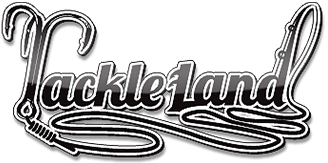
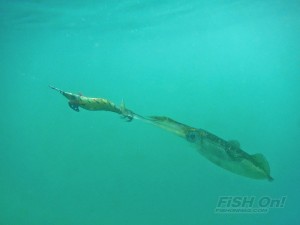

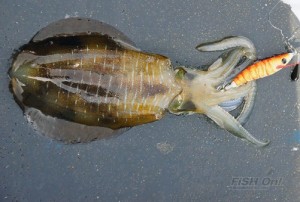
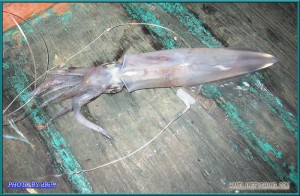

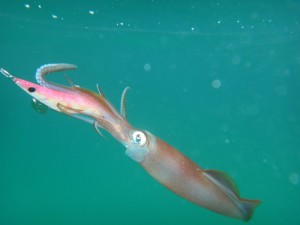


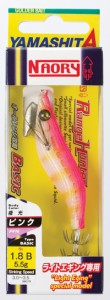


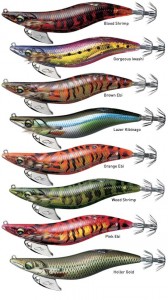
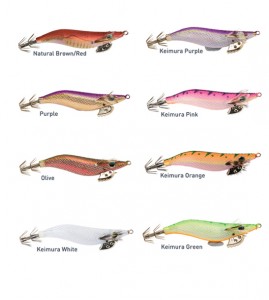
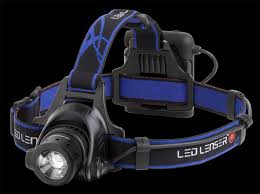
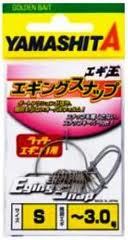
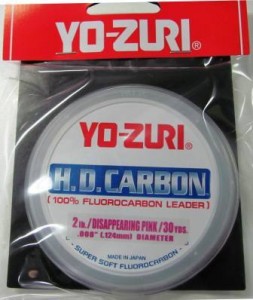
13 Comments
Hi Mark i met you the other night .Aaron has done a good job on this page. Thanks for Sponsoring him inn the new Egi club he has started . Hopefully i will come down on Thursday and have a look at your range of Egi gear.
Cheers Rob T .
Cheers Rob, we like to support clubs where we can.
What about in a small tinnie around Manley etc. ?
Lloyd, certainly a small tinnie would do the job as you do not have to get out very far to get a good feed!
eware of the drunken louts who frequent the area,both me & my young son was threaten & I would strongly advise u bring a Baseball Bat for protection!
Unfortunately Wayne it does not matter where you go these days, you should always be aware of your surrounding.
Can you catch them at Noosa?
Hey Jack, you certainly can catch them up there, we have caught a few around the light house at the mouth of the channel.
gday wondering does berly work on squid,like berly bucket full of prawn heads or mullet pieces
Hi Alan, I have never done this before, normally just look around light sources. An interesting thought though, if you give it a go, let us know the results!
Have you caught any squid in Loki Patera?
Hi Costa, Could you be a little more specific in the location, the only Loki Patera I know is way out of our range..
Are there squid to b had in Pumistone passageup Caloundra way